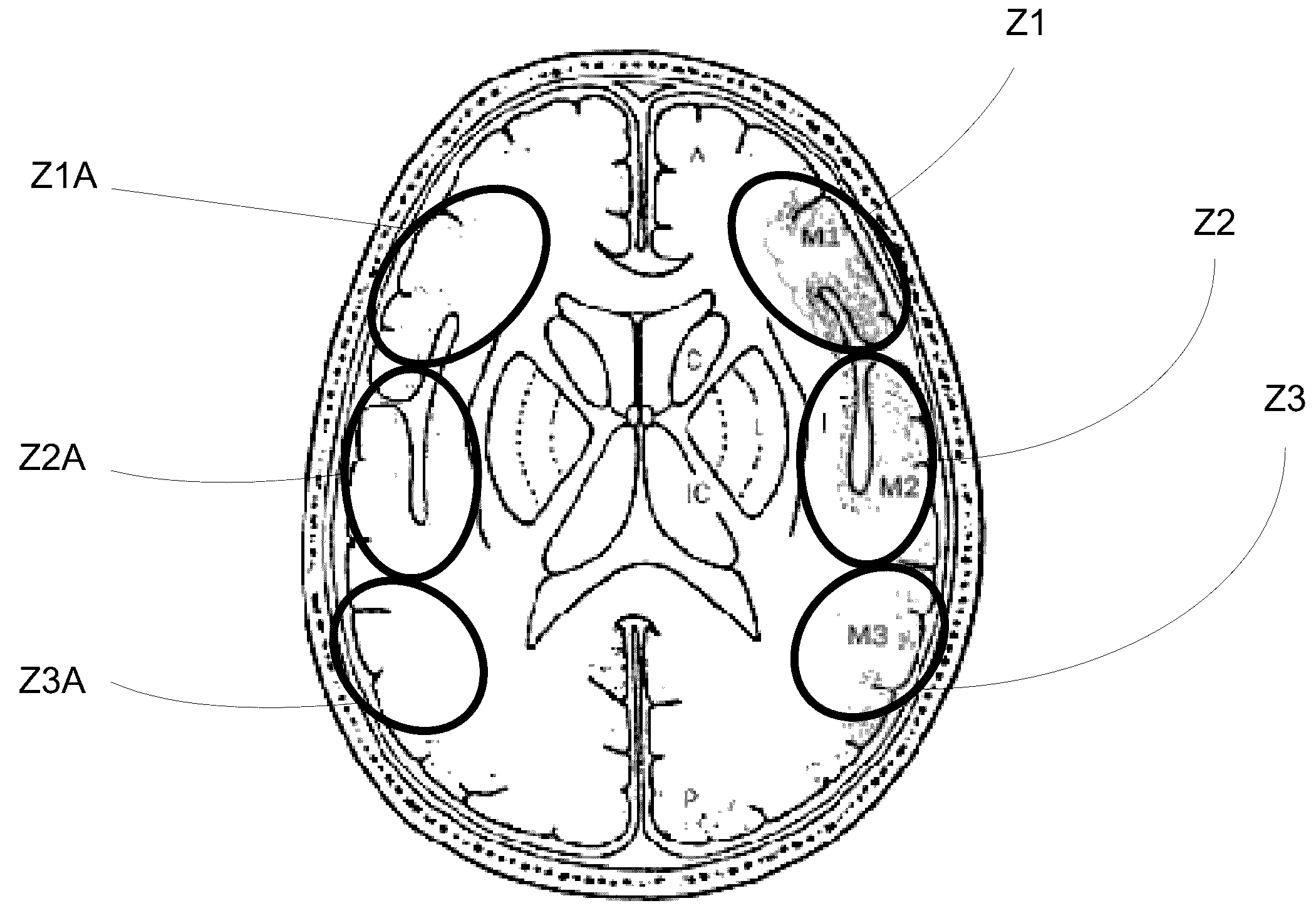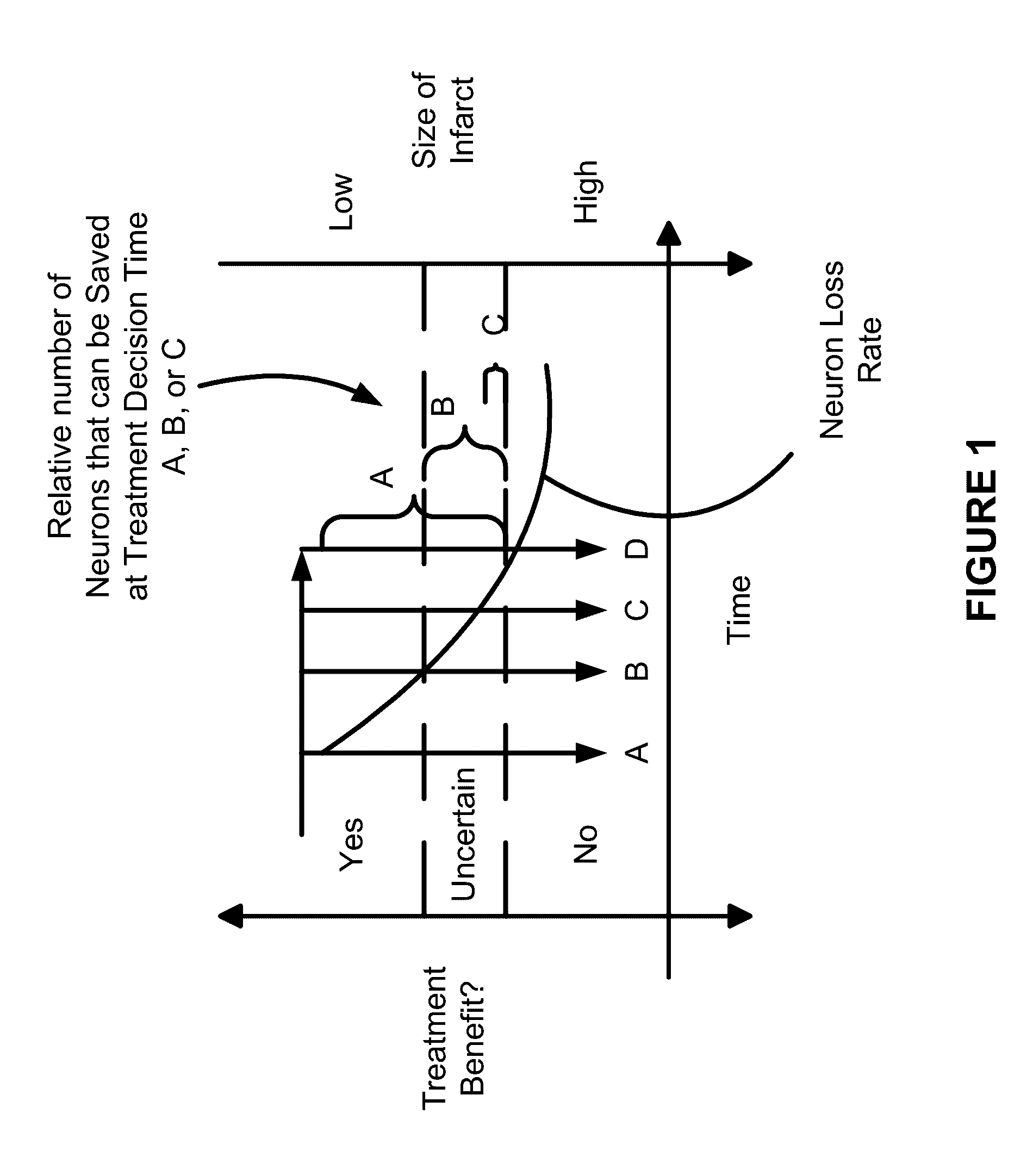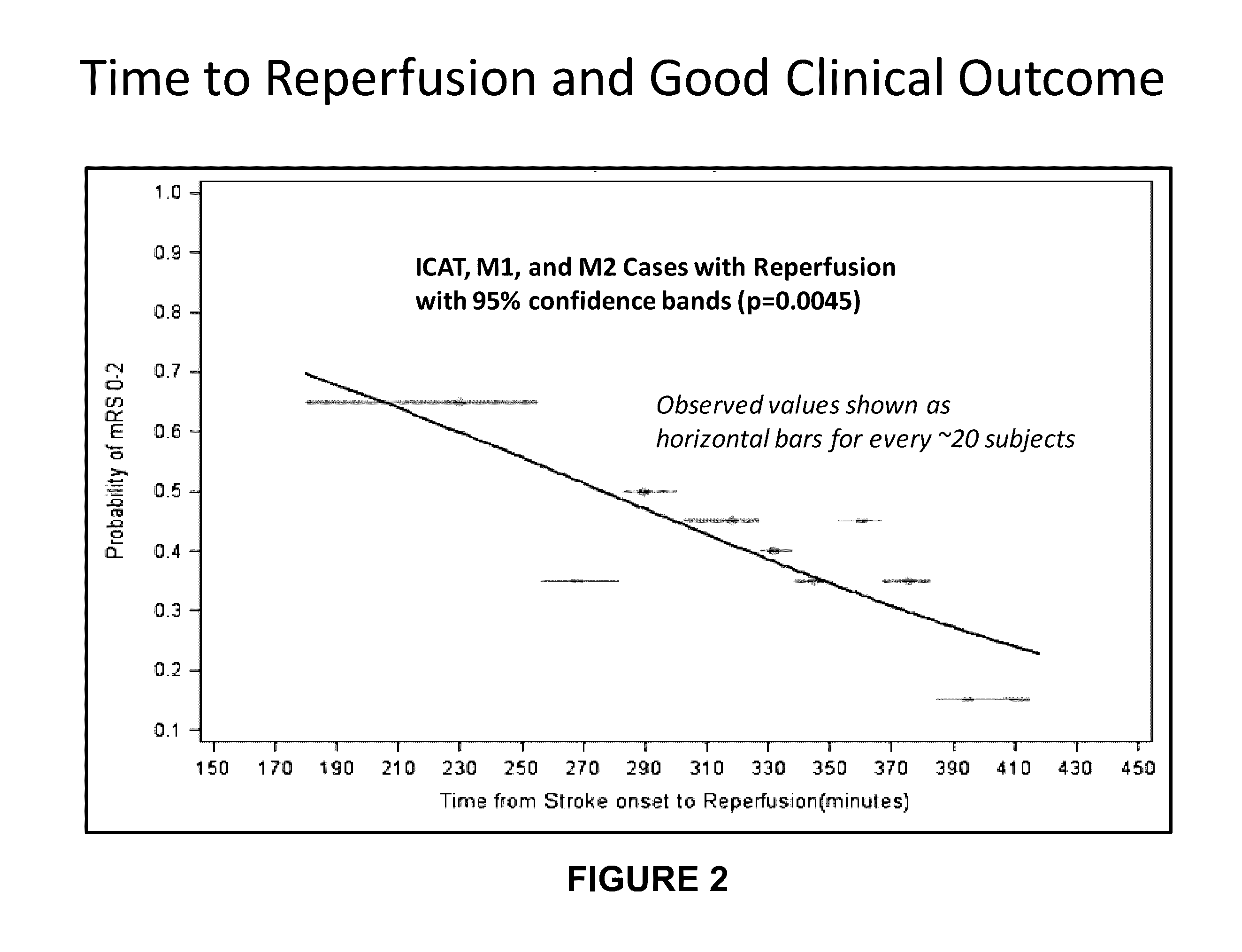Systems and methods for diagnosing strokes
- Summary
- Abstract
- Description
- Claims
- Application Information
AI Technical Summary
Benefits of technology
Problems solved by technology
Method used
Image
Examples
case 1
A, CTP Procedure
[0128]A 72 year old man presents to the ER at 0820 hours. On examination, he has right hemiplegia and aphasia with an NIHSS of 19. As known, NIHSS is a stroke scale where the NIHSS number is derived from an examination of the patient. The scale range is from zero to 42 with 42 indicating that the patient is dead. Generally, a score of 10 or larger usually means a large stroke.
[0129]A quick examination of the patient is performed (5 min to complete). An IV line is started, blood is withdrawn and the patient is transferred to CT scan. Patient arrives at CT scan at 0840 hours.
[0130]A non-contrast CT scan is performed at 0843 hours. This is immediately seen by the treating physician and it does not show a bleed. The CT technologist immediately sets up for doing a CT angiogram. A CT angiogram is performed (80 cc of contrast is injected). The CTA is completed by 0846 hours.
[0131]The CT technologist gets set up to do a CT perfusion exam (CTP). A localizer is performed and C...
case 2
TA
[0138]A 65 year old presents with slight right sided weakness and slight difficulty in word finding. The NIHSS was 4.
[0139]Patient is taken for a CT, mCTA. The initial non-contrast CT scan is unremarkable. CT angiogram shows an ulcerated plaque at the origin of the left internal carotid artery. No obvious intracranial occlusion is seen. However on the mCTA there is hold up of contrast in one of the branches of middle cerebral artery (MCA) which is detected on the later phases. This allows for detection of an embolus in the M4 branch (one of the distal branches) of the MCA. This has the potential to alter patient management including prognostication, decision on admission as well as whether or not to give thrombolytics.
case 3
A, mCTA, CTP
[0140]A 75 year old woman presents with left hemiplegia at 1520 hours. After assessment the patient is shifted to the CT scan suite. The patient is not cooperative and is not able to hold perfectly still. There is slight amount of motion artifact on the non-contrast CT scan. Some sections have to be repeated. Subsequently, the multiphase CTA is performed. There is again some degree of motion artifact that affects the quality of the scan at the level of the neck and in the second phase. However the intracranial examinations on the first and third phase are of good quality. Subsequently a CTP is performed. However due to patient motion the data is uninterpretable in spite of attempts at motion correction. In this scenario, it is important to note that the uninterpretable data (i.e. marginal data) was not available for consideration until the time the post processing was performed (which as in the example above took approx 30 min beyond the multiphase CTA). The treating tea...
PUM
 Login to View More
Login to View More Abstract
Description
Claims
Application Information
 Login to View More
Login to View More - R&D
- Intellectual Property
- Life Sciences
- Materials
- Tech Scout
- Unparalleled Data Quality
- Higher Quality Content
- 60% Fewer Hallucinations
Browse by: Latest US Patents, China's latest patents, Technical Efficacy Thesaurus, Application Domain, Technology Topic, Popular Technical Reports.
© 2025 PatSnap. All rights reserved.Legal|Privacy policy|Modern Slavery Act Transparency Statement|Sitemap|About US| Contact US: help@patsnap.com



